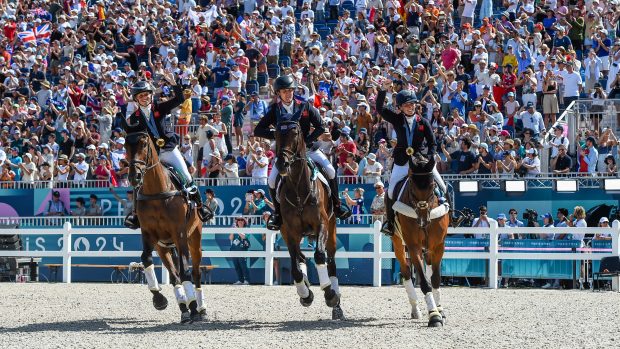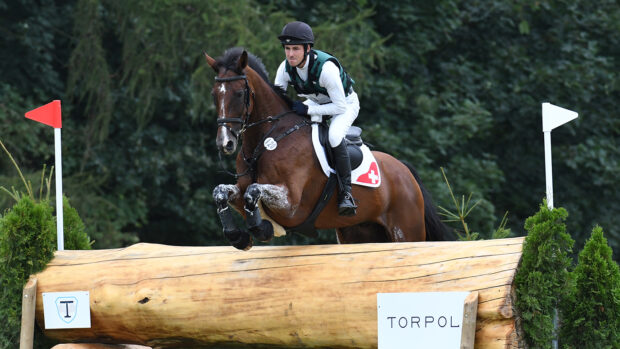1. How can I keep my horse on a straight line when riding cross-country?
Whenever people are worried about controlling their horse, the first thing they do is slow him down. They take up so much contact that in the end they have completely lost control.
Think about riding a bicycle. If you go too slowly, it is difficult to keep riding straight and in control. Pedal a little quicker and it is easier to keep straight. You can even take your hands off the handlebars while thebicycle is in balance. But if you go too fast, you lose control again and the bicycle slips over.
Try and create your line as far back from the fence as you can.When you line-up the first element of a combination, you should know what you are aiming for.
You may have noticed a particular tree when walking the course. Pick out points you can focus on when coming into the fence – like a letter on the sponsor’s name – and keep your eyes on it. Do not look round or think about what has just happened, instead concentrate on the next jump.
2. My horse doesn’t like jumping into water. How can I reassure him?
Never be in a hurry, as you will need to spend time playing with water jumps and preferably not always the same one.
Try to make things as easy as possible, so just walk into the water the first time without doing anything that could worry the horse.
Once he is happy playing in the water, pick the smallest step down and walk him off it before gradually building up to a larger one.
At a later stage, you can approach the water at a canter, but always come back to a trot before entering it.
Do not be frightened to use your whip if the horse is really naughty. He must learn that you mean business. Horses must learn to jump from wherever they are placed and should not stop because they are not quite right.
They have to learn to cope with non-perfect situations and to be genuine.
3. I always seem to come back with time penalties. Have you any time saving tips?
If you have trouble finishing inside the optimum time at novice level, you should always take the shortest route and consider taking all the quick options.
When walking the course, think about possible corners to cut. Instead of galloping towards a fence, take time over the approach and turn more quickly afterwards.
Once your horse is more experienced, start to cut inside the perfect line to a fence and approach it at an angle.
You have to learn ways of being cheeky, like coming closer to the fence before starting to pull up. If your horse is very strong and out of control, you will waste 50 yards pulling him up before a fence.If he is balanced and underneath you, you can wait longer before setting him up. It is difficult to keep a horse on the bit when galloping between fences but try not to lean on him too much, as he will just lean back against you.
Gallop along on a loose rein if the horse is strong. If a rider is worried, he is tempted to hang onto the horse all the time. Sometimes, being a little sharper can be more effective before being lighter again.
But remember, if there is a trial of strength between the horse and you, the horse will always win.


